In Japan, various cities often have their own unique dishes or specialties that are famous worldwide. In Gifu Prefecture, you will find an old riverside castle town called as Gujo (郡上) Hachiman and the dishes that they are famous for are actually… NOT edible. (Sampuru Workshop)
They are called as shokuhin sampuru (サンプル) — a term derived from the word ‘sample’ — and they are basically the real-looking fake food displays that you see at the entrance of most Japanese restaurants (used as a way of enticing customers).
Not a lot of people know (but now you do!) that it is in Gujo Hachiman where 80% of Japan’s food samples are made, thereby making the town a lucrative and leading manufacturer of sampuru in the country. Plus, given the popularity of sampuru, it has become quite a billion-yen industry!
But of course, it helps to note that making them is NOT a walk in the park because it is actually a century-old practice of elite craftsmanship. To date, there are various sampuru food factories that you can find in Japan that mass-produce food replicas; but, it is in Gujo Hachiman where these items are still skillfully handmade by trained artists.
I guarantee you, they are SO good at what they do that when you witness the items that they make, you will surely mistake it for the real thing!
I had the pleasure of visiting Gujo Hachiman during my trip to Central Japan and I found out that there are about 10 sampuru workshops in town, with only 4 of them offering hands-on programs to tourists so that people can experience making sampuru.
Naturally, I made sure to participate in this activity and by the end of it all, I found it mind-blowing how they could produce insanely good and ‘believable’ food replicas — and how I managed to make some too!
Sampuru Workshop
» History & Facts of ‘Sampuru‘
Sampuru or fake food samples have an interesting history in Japan and it first started with Takizo Iwasaki.
There are various ‘legends’ on how he first arrived at the concept of making sampuru, but two of the popular stories about its origins are that:
- When his wife was sick, they couldn’t afford electricity for a while, so he had to use candles while he watches over his wife. During those times, he was inspired by how the melting wax perfectly molded on the shape of the tatami mat. After a while, he started to work on this idea as he tried to make a realistic wax omelet.
- He was inspired by the wax replicas of organs or body parts that were used in medicinal studies, so he decided to apply the same idea to food.
Anyhow, fortunately for Iwasaki, the time was right for introducing his sampuru inventions. He opened his first factory in Osaka in 1932 but he swiftly returned to his hometown, Gifu to establish Iwasaki Mokei or Sample Village Iwasaki. Business caught on with this and soon, one of Tokyo’s major department stores implemented Iwasaki’s sampuru and it was a success! Today, Iwasaki Co. Ltd. remains to be a blooming business.
You might be wondering… how exactly did sampuru become such a booming industry?
Well, humans are visual creatures — much more for the Japanese who like to “taste first with their eyes”! So naturally, seeing these sampuru displays in front of restaurants have helped made their dishes look appetizing and have also helped give an idea to the consumers about what they are going to get if they order a certain dish (thereby enticing customers) a. For sure, you can see the visuals in a menu but to blow up those pictures and display them as life-like displays certainly makes it more of a great advertisement tactic! (It is also a helpful thing for foreigners who wouldn’t know how to read Japanese characters).
Some interesting trivia about sampuru:
- Making a food replica or sampuru typically costs 10 or 20 times more than the dish’s actual value!
- It used to be made of wax, but today, workshops now make food replicas with plastic or durable polyvinyl chloride (PVC) that are more long-lasting and more life-like.
.
» Sampuru Workshops in Gujo Hachiman
From the 4 sampuru workshops in Gujo, there are 2 famous establishments: Sample Village Iwasaki and Sample Kobo.
Sample Village Iwasaki
Hours: 10:00AM to 4:00PM (classes until 3:00PM)
Closed: Tuesdays, 1st Thursday in October, 1st Saturday in February, New Year holidays
Admission: FREE to enter, but for classes, price start from ¥800 to ¥1,200
.
Sample Kobo
Hours: 9:00AM to 5:00PM (extended hours during the Gujo Odori festival)
Closed: Thursdays (except in summer) and New Year holidays
Admission: FREE to enter, but for classes, price start from ¥900 to ¥3,000
Website: https://samplekobo.com/
Even though Sample Village Iwasaki has more selections, it is rather located a bit far (1 kilometer) outside the town center and they also don’t allow visitors to have a look inside their workshops. Sample Kobo, on the other hand, is in the town center and they even allow visitors to go inside their workshop to watch artisans create the sampuru that they make in their store.
That being said, me and my companions ended up visiting Sample Kobo instead.
In their establishment, you will first step in to their souvenir shop that sells an array of big and small sampuru that are also modeled into key holders, magnets, mobile straps and others. I especially loved the huge beer glass that was smacked in the middle, the ridiculously real-looking tangerines, as well as the coffee cans on the floor that looked like they were spilled.
Further in, you will then find their sample exhibition. The staff can offer you a quick ‘quiz session’ to test if you can properly differentiate the real one from the fake one.
Since meat or seafood can easily spoil in these display cases, they rather featured not-so-easily-perishable items like cookies and other snacks/sweets… and well, I swear to you! I may be a huge food lover and also a decent cook, but it was so difficult telling things apart — which just shows how much work and detail are being put into these sampuru.
Going further into their sampuru workshop you will find their production studio near the courtyard where you can watch their staff make sampuru LIVE. There are also some items on the table that you can touch and take photos with.
» Sampuru Workshop Packages in Sample Kobo
Sample Kobo has 4 food replica sampuru workshop experiences available:
- Making Tempura & Lettuce
1 person: ¥1,200 (excluding tax), includes 3 tempura and 1 lettuce
Groups: for 20 people or more, ¥900 per person, includes 1 tempura and 1 lettuce
Small kids are not allowed to do this since it involves hot wax. (Elementary students and above are allowed).
. - Making Ice Cream in a Cup
1 person: ¥900 (excluding tax), choice of vanilla, strawberry, matcha or chocolate
Groups: this is conducted one-on-one with the staff so huge group customers are not allowed (only 5 people or less)
No age limit.
. - Making Sweets
1 person: ¥900 (excluding tax)
Groups: ¥900, can be admitted as it’s an easy activity without need for one-on-one
No age limit.
.
If you opt for Sample Village Iwasaki, with them you can make ramen (¥2,900), spaghetti (¥2,700), sushi, kakigori (shaved ice), or keychain (¥500 to ¥750). It helps to note though that most of these experiences are only available on weekdays.
Reserving your spot beforehand in both of these shops is required. You can walk in, but due to the popularity of this place, expect that you might have to wait a while before it’s your turn if you did not do prior booking.
» My Sampuru Workshop Experience
We decided to try the experience that involved hot wax to experience the ‘traditional’ way of making sampuru; and so, we went for the tempura and lettuce sampuru workshop.
As a group, we were ushered in the store to their ‘experience corner’. We left our bags in the shelves and each put on an apron. At this point, it was clear to see that the staff mostly didn’t speak English — rest assured, the demonstrations later on were very simple so even if you don’t have a translator with you, booking here should be no problem.
Now, first up, we did the tempura activity. If you come here solo, you can choose the kind of food that you will do in tempura style: it can be a shrimp or the other kinds of vegetables available. But if you come in a group (which I did), the standard offering for making the tempura is the shrimp or ebi in Japanese.
Since this was supposed to be a more simplified lesson, we didn’t do the part where we had to make the plastic shrimp; hence, it was already prepared/made beforehand.
As for making the shrimp tempura, I was instructed to slowly and gradually drip hot wax into the cold water basin. I had to do it in a way that it will later on look like a tempura coating. It sounds difficult but once you actually do it, it’s actually quite easy!
Once that’s done with, I placed the plastic shrimp on top and then gently wrap it with the wax (that now looked like fried flour batter)… and that’s it!
When I looked at my ‘creation’, I certainly felt giddy! It really looked like a freshly-fried tempura.
After this was the making of the lettuce or cabbage — in which the difficulty rose up a little bit.
And so, in the same concept as the batter-looking wax for the tempura, I had to pour wax into the cold water. BUT this time around, it was a mix of white and green wax wherein I had to pour the green one on top of the white. Afterwards, I had to slowly pull the white end under the water until the green part extends.
For this, it was absolutely amazing to see how the wax gradually started to look like the skin of a lettuce!
Next, I cut the wax in half. I scrunched up the other half into a ball and then made the other half a wrap as I ‘try’ to make it look like a true baby lettuce. Now this is the part where it involved a bit of luck and skill — mine almost didn’t look like one… haha! But I could still easily fool someone into thinking that it’s the real deal.
We all took turns doing this, and during the time that I was watching the others do it, I continued to look in awe at the overall process while I wondered about the different amazing techniques that they have to do to recreate all the other kinds of food and dishes out there!
For sure, this sampuru workshop activity is something that I would recommend to anyone — no matter the age because it is such a cool and fun experience to do.
Sampuru Travel Guide
» How to Reach Gujo Hachiman
From Tokyo. You need to get to Nagoya first. To do this you can…
- Ride the shinkansen or bullet train: Ride the JR Tokaido Shinkansen (it can be a Nozomi train, Hikari or Kodama) wherein a one way far would start to cost from ¥10,360 (unreserved). A JR Pass would naturally give you FREE access to the shinkansen (but only on a Hikari or Kodama). Alternatively, you can purchase the “Puratto Kodama Economy Plan” at least one day in advance to travel for only ¥8,100 on a reserved seat.
- Ride the highway bus: This takes about 5 to 6 hours with option of day or overnight buses. Fares would start at around ¥5,000 (but there are discount buses such as Willer Express that cost ¥2,500 only).
- Ride local trains: For 6 hours, this will typically involve at about 3 train transfers. If you have a “Seishun 18 Kippu” ticket, you can pay as little as ¥2,370 (but regular fare will be about ¥6,260).
From Nagoya. It’s best to fly into Japan by landing at Chubu Centrair International Airport in Nagoya if you want to get to Gujo faster. From there, you can…
- Ride the highway bus: You can take the Gifu Bus (operates 1 round trip per day at Meitetsu Bus Center for 80 minutes at ¥2,060; but it operates multiple round trips at Meitetsu and JR Gifu Stations for 75 minutes at ¥1,520), or the Nohi Bus, Meitetsu and JR Tokai Bus (operate 9 round trips per day at Meitetsu Bus Center for 90 minutes at ¥1,850 with round trip ticket available for ¥3,190 valid for 4 days).
- Ride the train: Get on the JR limited express train or local trains (for a price that starts at ¥970) to get to Mino-Ota Station. From there, you can ride to Gujo for ¥1,350.
- Ride a rented car.
To get to Sample Kobo, it will be a 20-minute walk from Gujo-Hachiman Station (郡上八幡駅); but Sample Village Iwasaki is just a 5-minute walk from this same station.
For getting the best flight deals, my go-to platform is Skyscanner. But of course, it’s always good practice to first research the budget airlines that exist in the country that you’re currently staying in, since they could have rock-bottom prices that are not often visible in the above flight search engines.
If you need further help in transportation, just use the directions feature in Google Maps — I find this as a very helpful tool if I want to reach a certain place from a particular location. (However, Google Maps doesn’t work offline if you want routes or transportation schedules, so I recommend that you get a pocket WiFi or a SIM Card to stay connected online).
» How to Go Around Gujo Hachiman
It’s a small town so it can be easily explored on foot!
» What Else to Do in Gujo Hachiman
As an old castle town, Gujo has a lot of attractions to keep you occupied. Some of the top highlights in the area would be the Sogi Spring which is a local symbol given how it is an example of the area’s pure waters. Walking through the anicent streets of Shokunin-machi and Kajiya-machi is also something that you should not miss due its charming sights. If you come here in the summer, you could even be a part of the famous Gujo Odori dance!
For a complete list of things to do, read my travel guide here…
» Helpful Japanese Phrases
Hello: Konnichiwa (Kohn-nee-chee-wah)
Thank you (normal): Arigatō. (Ah-REE-gah-tohh)
Thank you (less formal): Arigatō gozaimas (Ah-REE-gah-tohh goh-zahy-mahs)
Thank you (informal): Dōmo (DOHH-moh)
Yes: Hai (Hai)
No: Iie (E-eh)
Goodbye (long term): Sayōnara (Sah-yohh-nah-rah) Goodbye (informal): Ja ne (Jahh neh)
Excuse me: Sumimasen (Soo-mee-mah-SEN)
I’m sorry: Gomen nasai (Goh-men-nah-sahy)
Is there someone here who speaks English?: Dareka eigo ga hanasemasu ka? (Dah-reh-kah ey-goh gah hah-nah-seh-mahs kah?)
Help!: Tasukete! (Tahs-keh-teh!)
Cheers!: Kanpai! (Kan-pie!)
• • •
Overall
Doing a sampuru workshop was incredibly fun and interesting!
It might seem intimidating at first but everything was really easy to do — the staff were also very friendly, patient and helpful to everyone, despite the language barrier.
That being said, I highly suggest dropping by the town of Gujo Hachiman if you’re exploring the area of Central Japan because it will truly be a memorable affair for you and your family or friends!

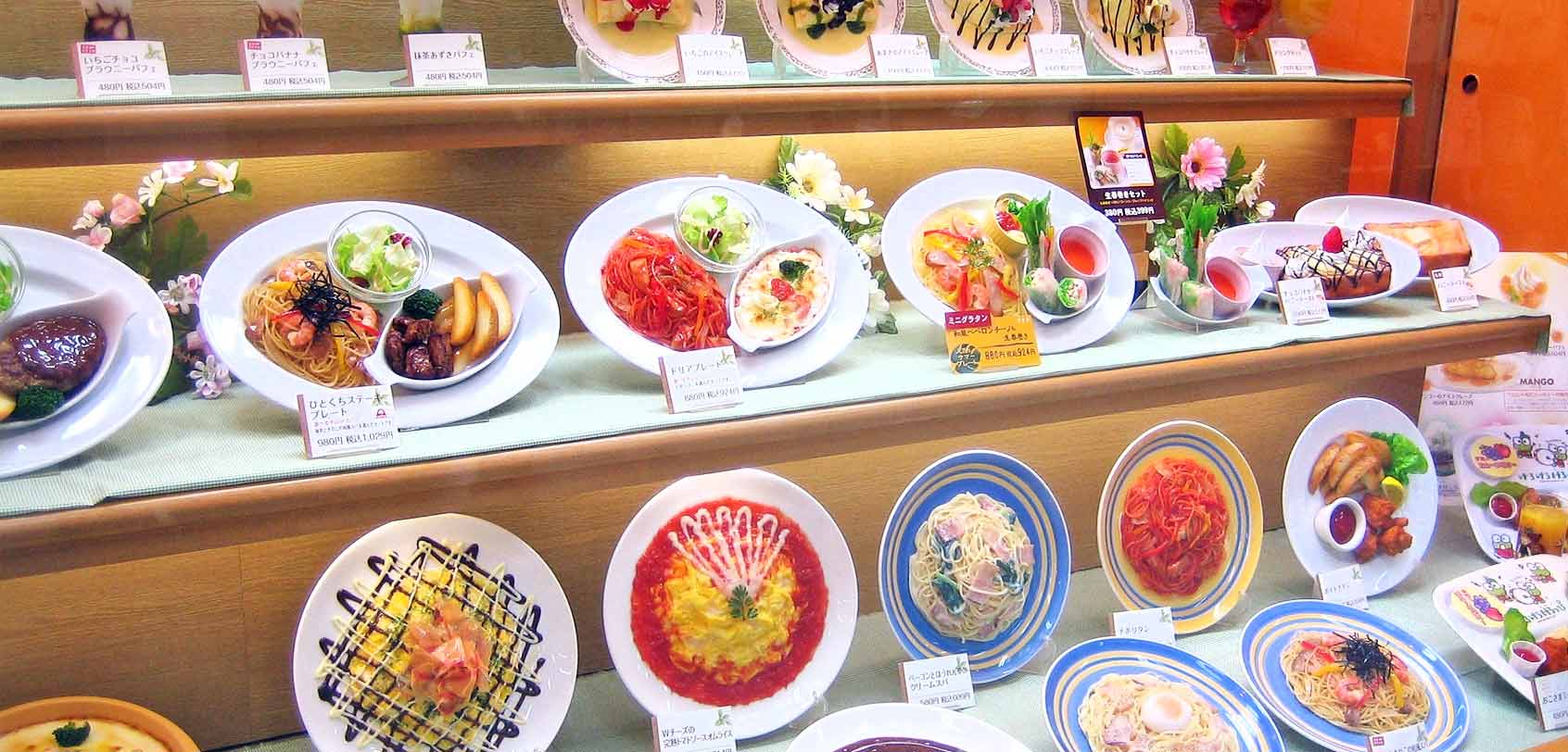
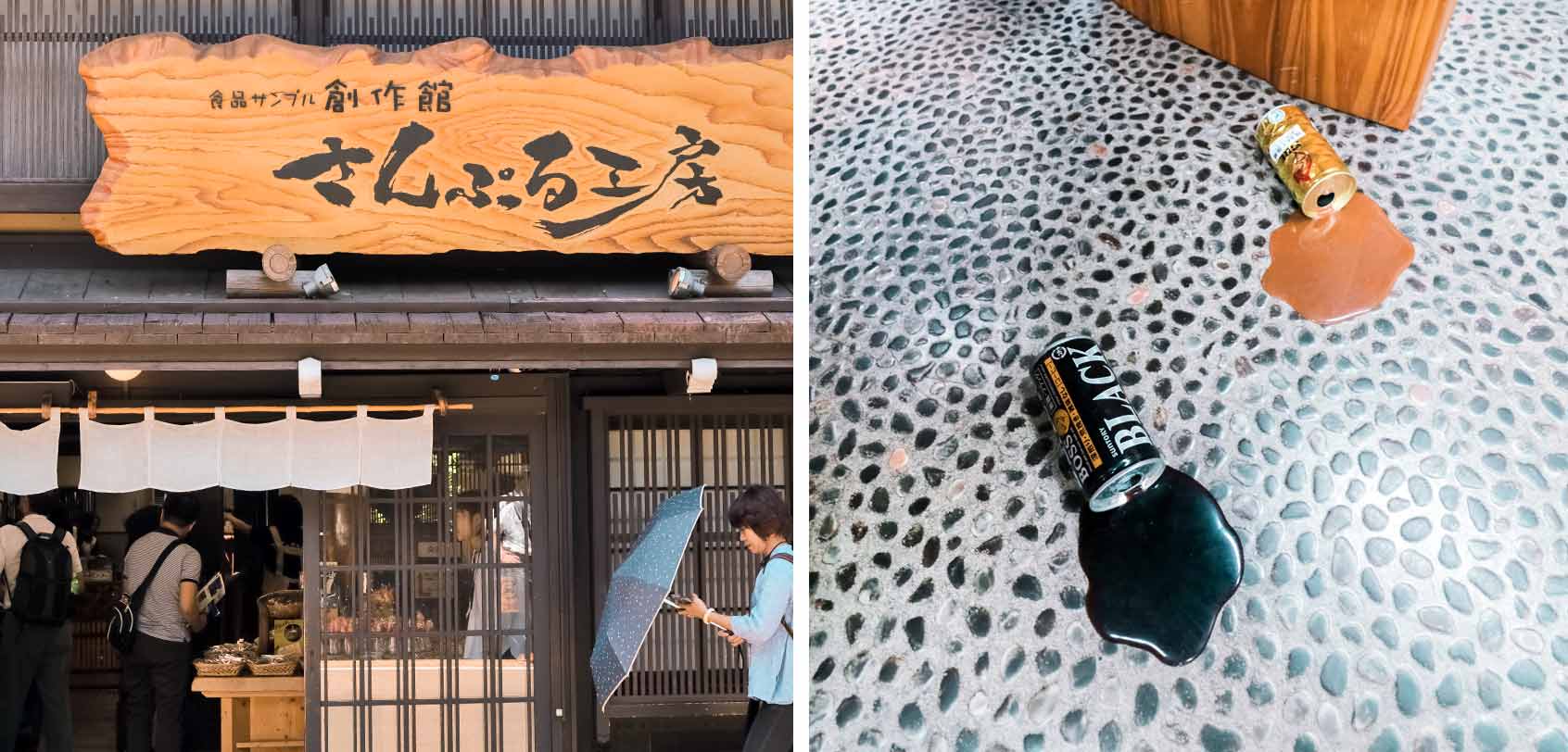


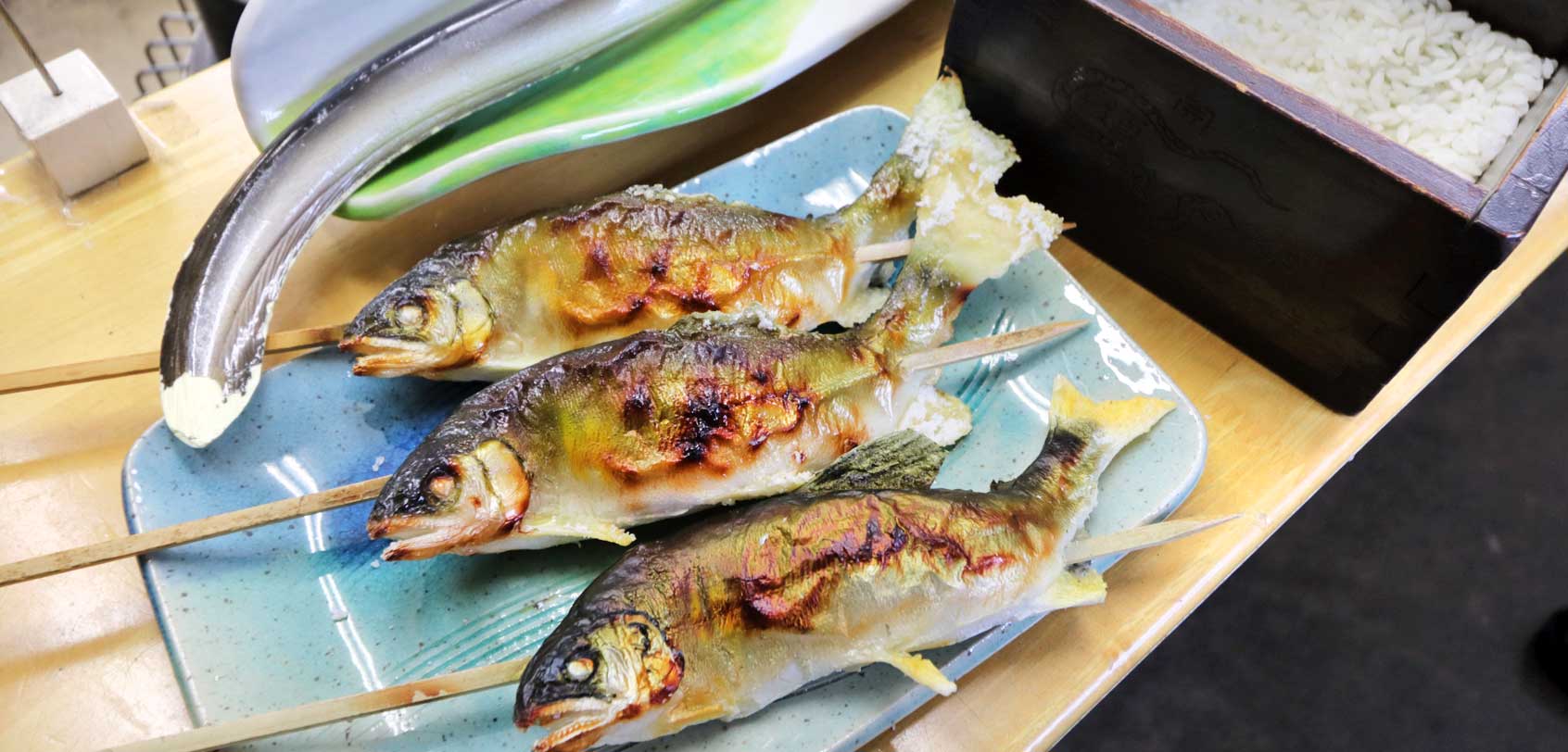



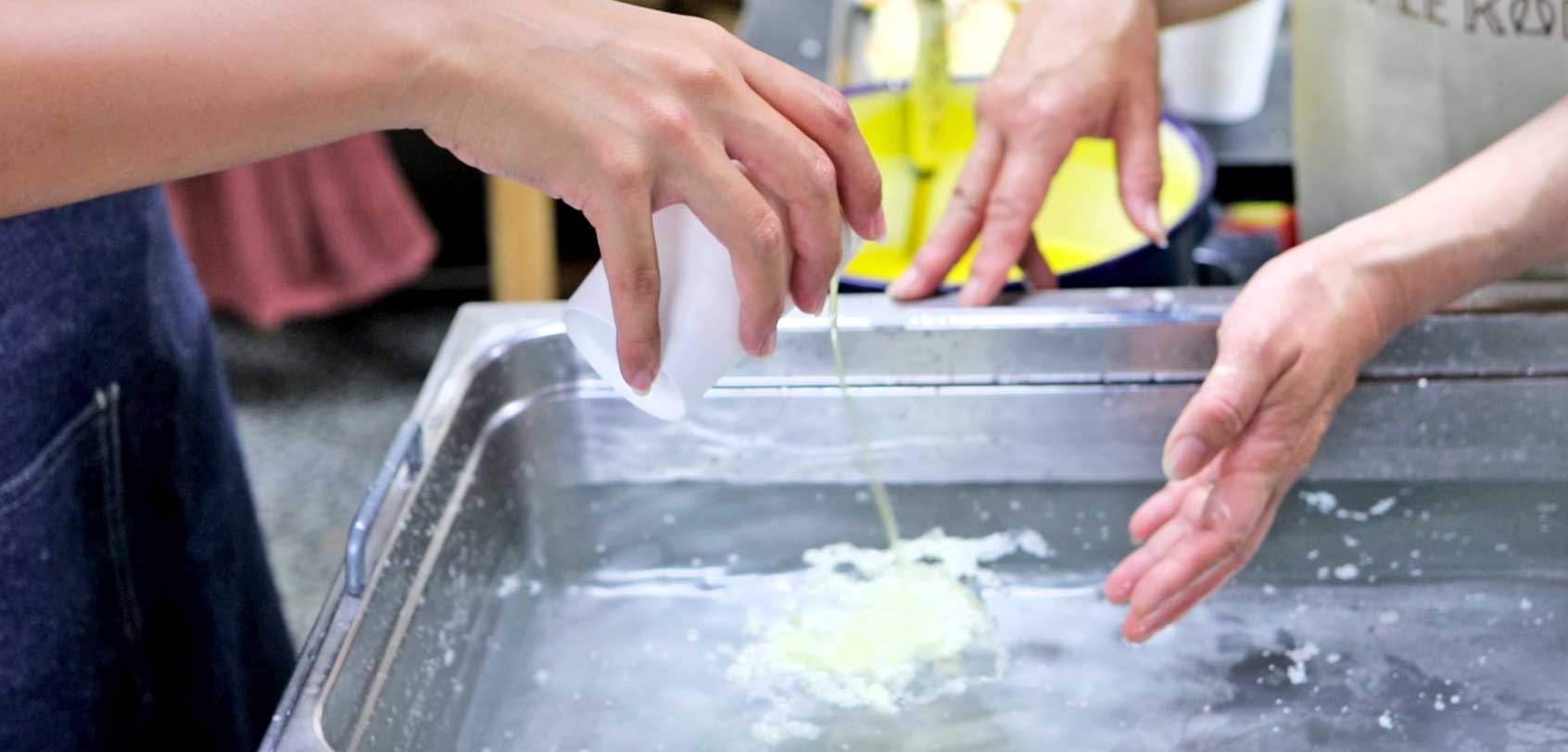
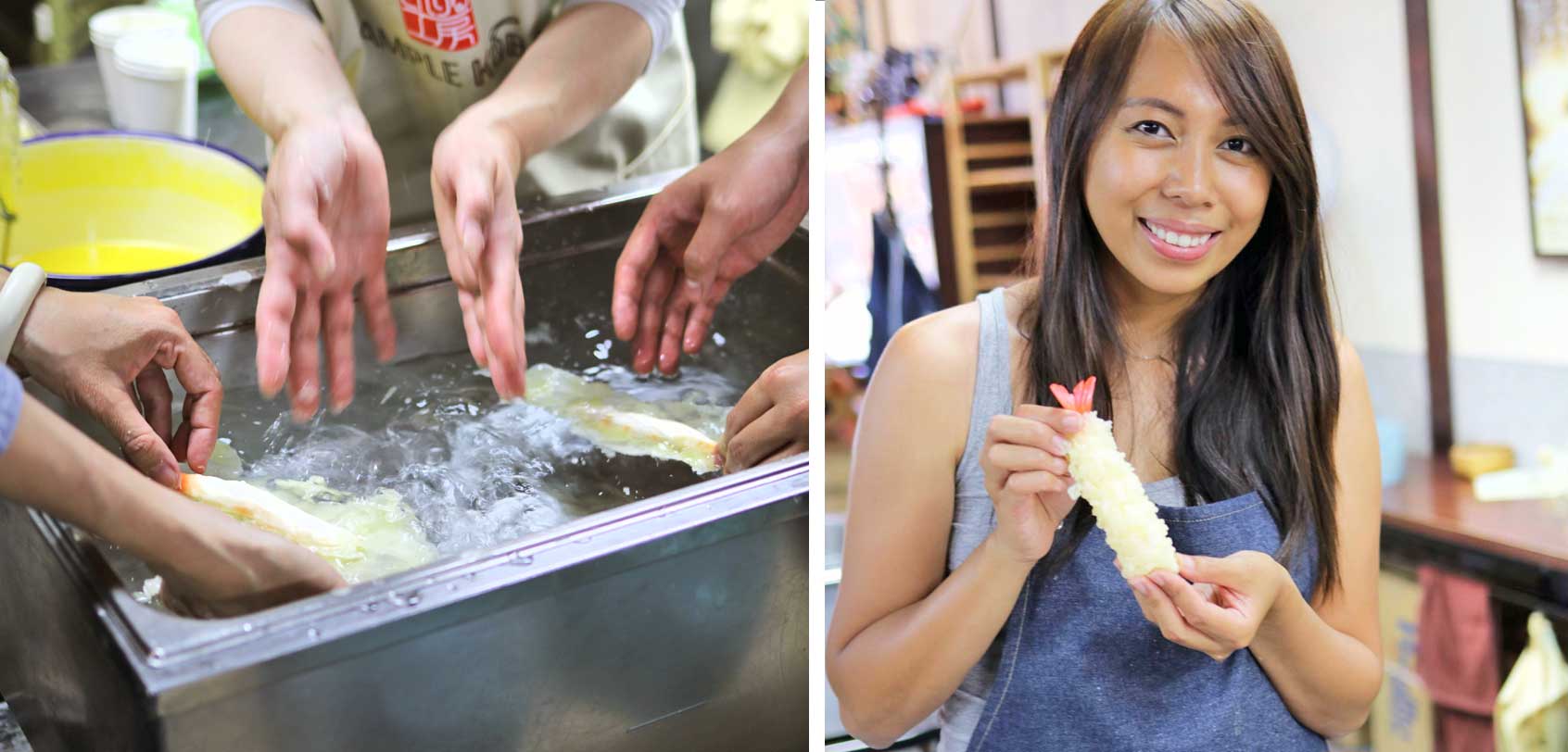
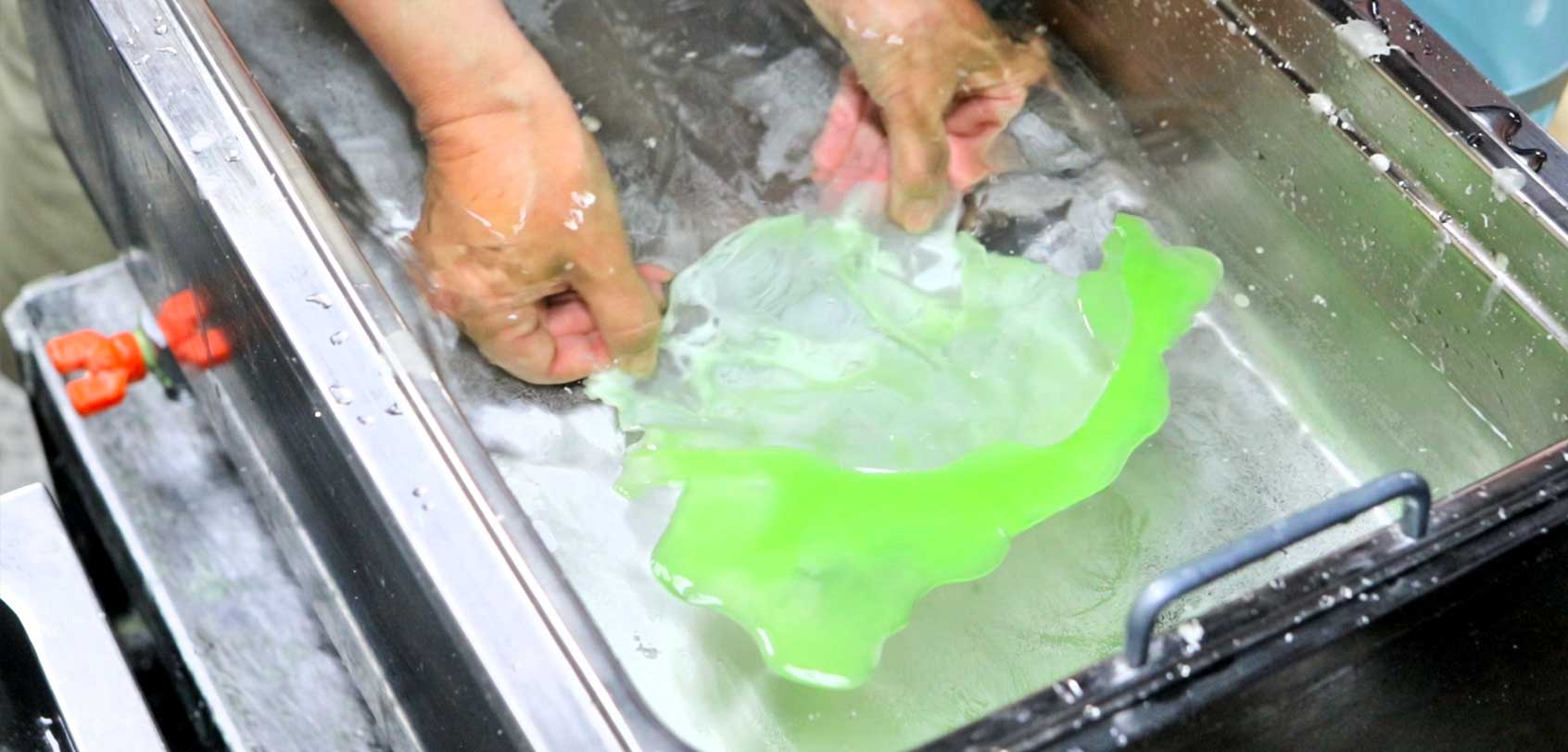
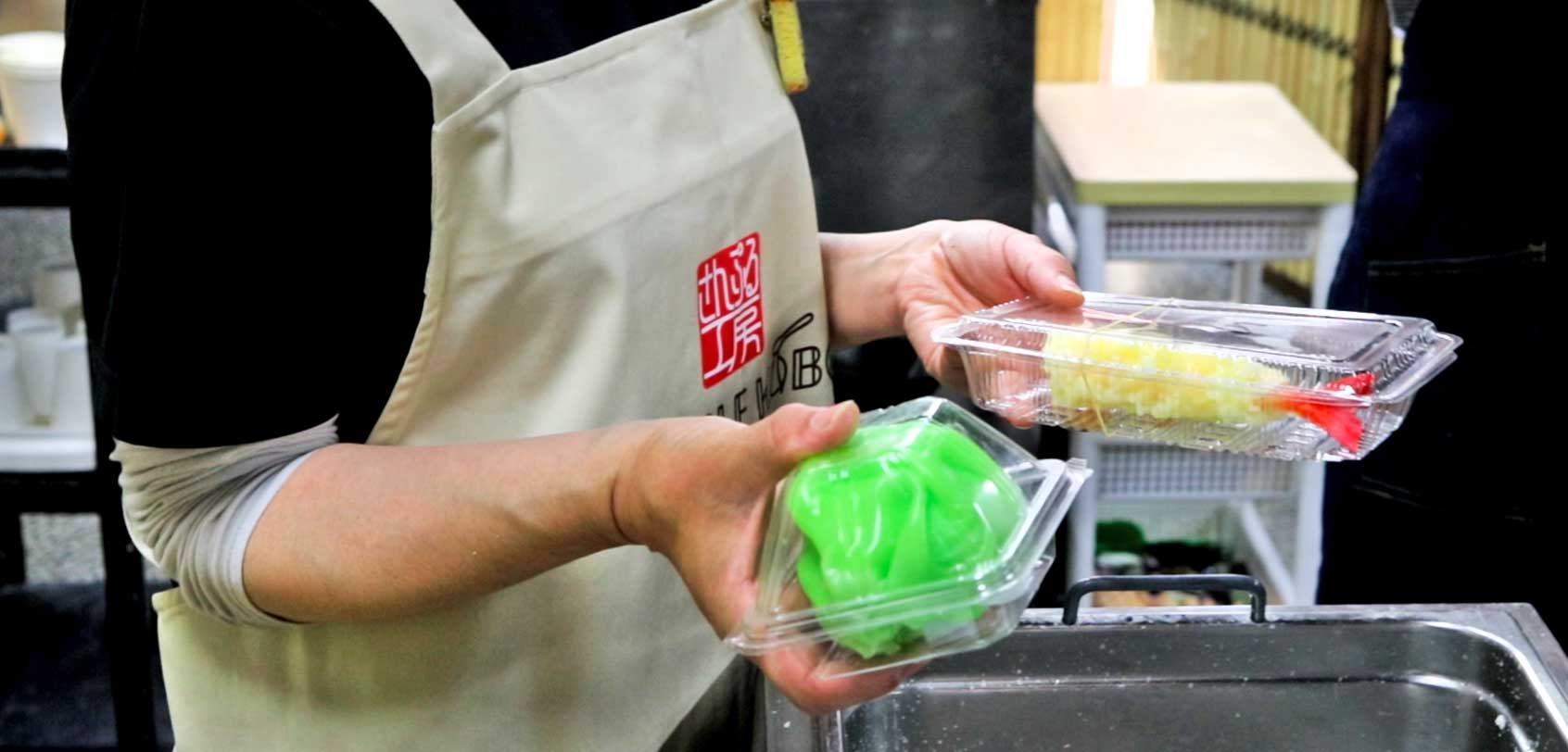
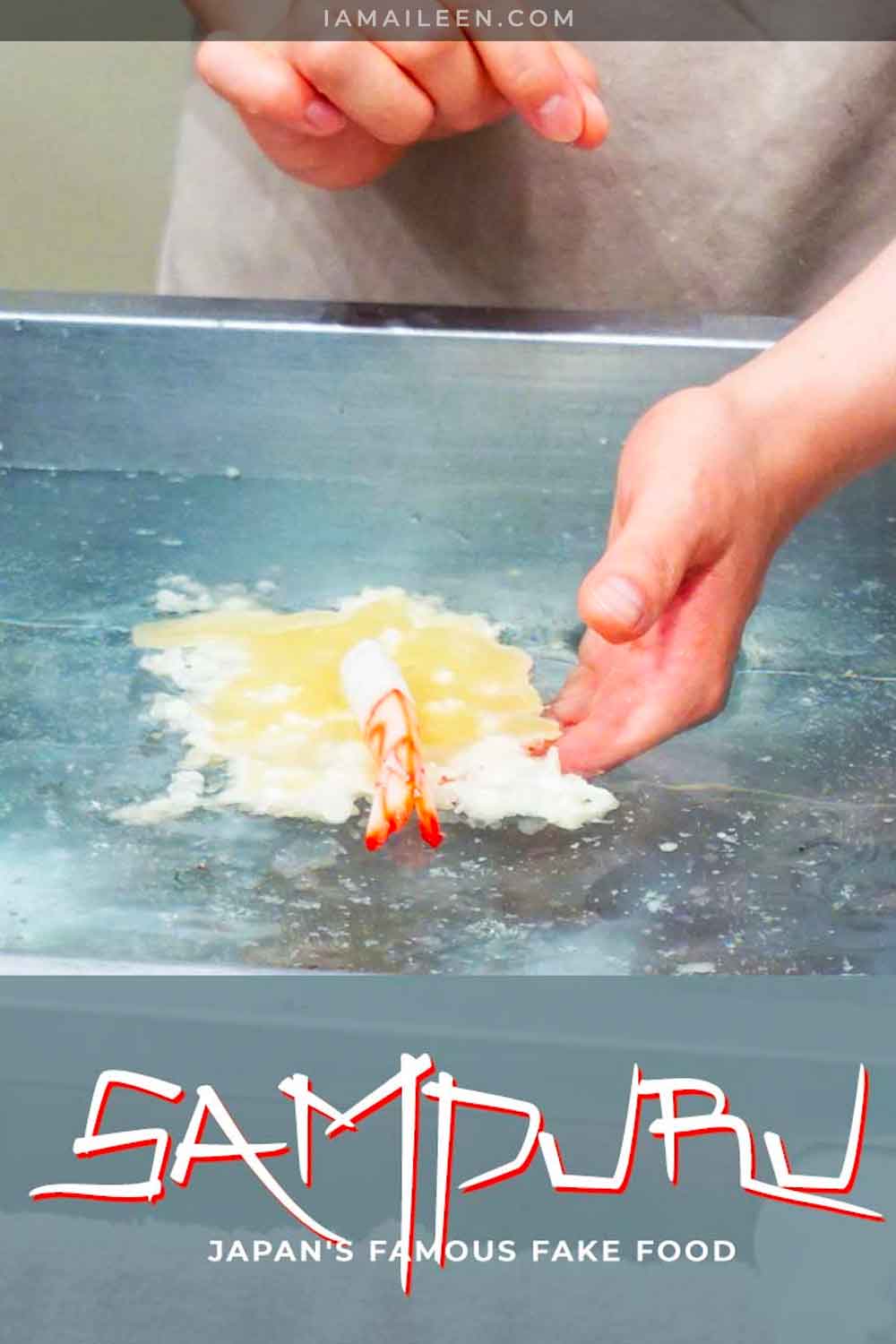


I was looking for activities around Nagoya, because I recently moved there and this sample making workshop sounds amazing. Thanks for all the infos. I will definitely try making my own fake food at Sample Kobo. This is so cool!